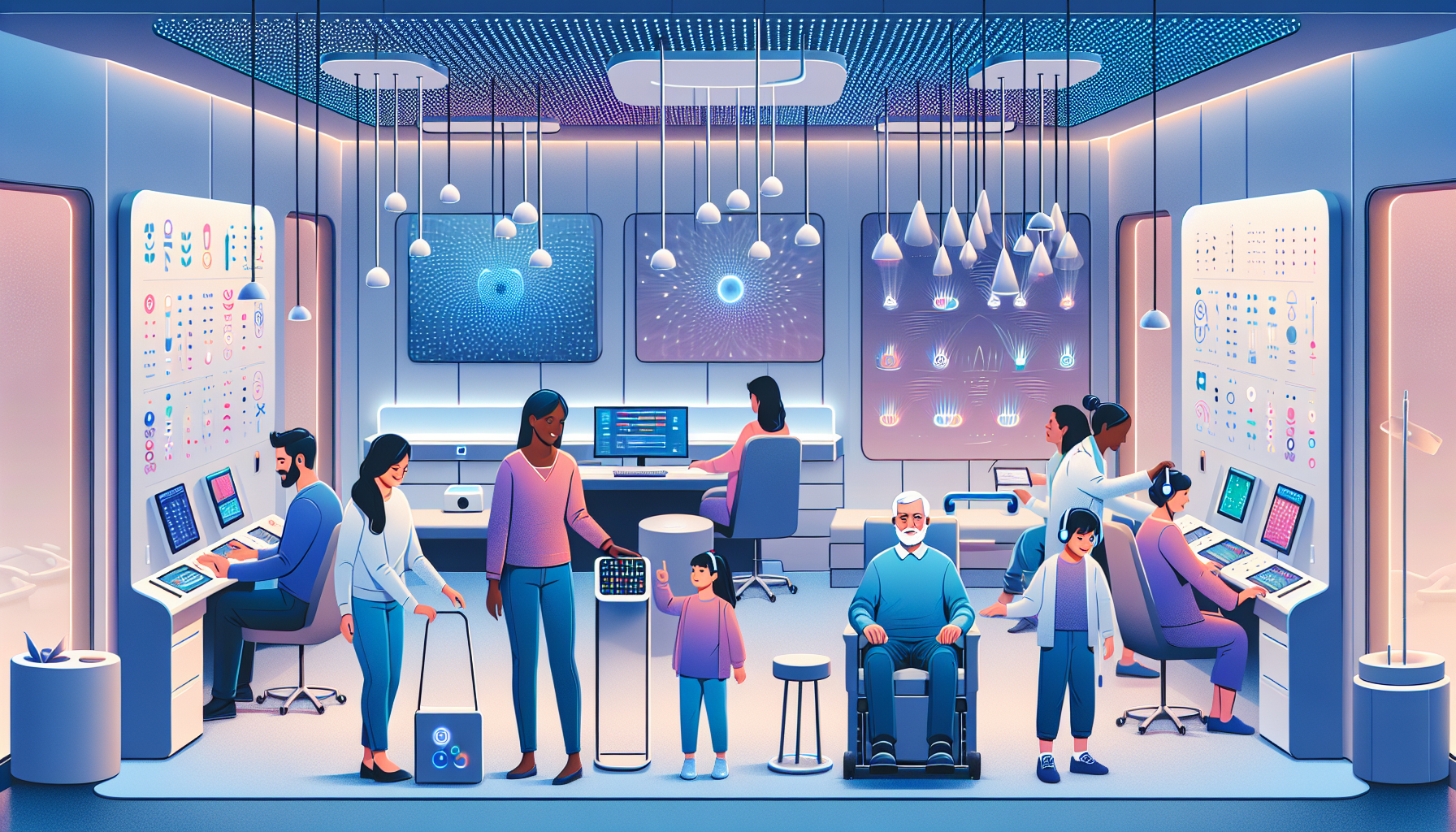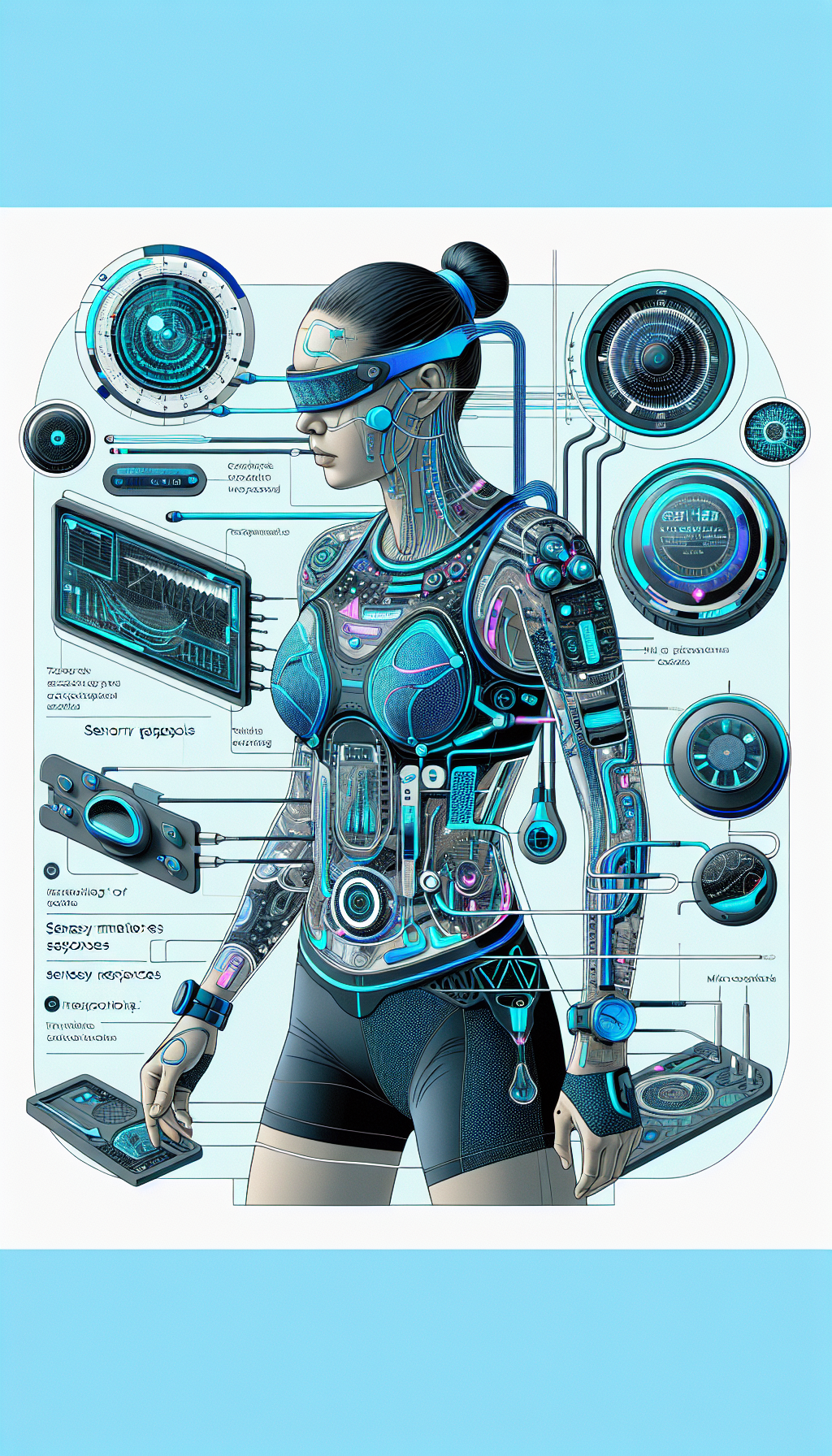In an era where technology permeates almost every aspect of our lives, its role in healthcare has become increasingly significant. One area that has seen remarkable technological transformation is that of sensory health. Sensory health interventions, which aim to enhance or remediate the sensory processing abilities of individuals, have been revolutionized by technological advancements. This article explores the interplay between technology and sensory health, and how this synergy is improving lives.
Understanding Sensory Health
Sensory health refers to the efficient processing and interpretation of sensory stimuli by our nervous system. It affects how we perceive the world around us and our reactions to it. Sensory processing disorders, which can disrupt this balance, may impede an individual’s ability to function effectively in daily life.
In the pursuit of optimal sensory health, technology has offered innovative solutions, from sensory-based interventions for stress reduction to creating inclusive environments for those with sensory sensitivities. A key aspect of sensory health is its relationship with other bodily systems. For example, sensory health intricately connects with brain health, as the brain interprets the sensory information that our body perceives.
Technological Innovations in Sensory Health
The integration of technology in sensory health interventions has opened up new avenues for therapy and rehabilitation. Let’s delve into the various technologies playing a pivotal role:
Sensory Rooms and Equipment
Sensory rooms, equipped with lights, sounds, and interactive equipment, are designed to either calm or stimulate the senses. They are becoming increasingly sophisticated with the integration of digital controls and customizable environments that cater to individual needs. For instance, the use of sensory rooms in mental health facilities has shown to provide a safe space for clients to explore sensory experiences in a controlled manner.
Wearable Technology
Wearable devices that monitor physiological responses to sensory stimuli are aiding in the personalization of sensory interventions. These devices can track heart rate, skin conductance, and other indicators to help individuals understand their responses to certain sensory inputs and adjust their environments accordingly.
Virtual Reality (VR) and Augmented Reality (AR)
VR and AR technologies create immersive experiences that can be used for therapeutic purposes, such as exposure therapy for individuals with sensory processing disorders or phobias. By controlling the sensory input in a virtual environment, therapists can gradually introduce stimuli in a safe and controlled way.
Apps and Software
There are a multitude of apps designed to support sensory health, from those that provide calming sounds to help with sleep, to software that assists with evaluating sensory processing in adults with developmental disabilities. These digital tools provide accessible options for individuals seeking to manage their sensory health.
The Impact of Sensory Health Interventions
The benefits of technology-enhanced sensory health interventions are far-reaching. Here are some key areas of impact:
Stress Reduction
Sensory-based interventions have been found to reduce stress and anxiety. By utilizing technology to create environments or experiences that soothe the senses, individuals can achieve a state of relaxation and calmness. Refer to the detailed exploration of sensory-based interventions for stress reduction for more insight.
Developmental Support
Children with developmental disorders, such as autism, often benefit from sensory integration strategies. Technology can play a critical role in developing sensory skills by providing engaging and interactive sensory experiences.
Employment and Learning Environments
Sensory issues can affect an individual’s ability to work or learn effectively. By understanding the impact of sensory issues on employment opportunities and learning, we can utilize technology to create sensory-friendly spaces that accommodate diverse needs.
Personal Development
The importance of sensory awareness in personal development cannot be overstated. Sensory health interventions can aid in emotional regulation and improve overall well-being, leading to better personal growth.
External Resources Supporting Sensory Health Interventions
To further understand the role of technology in sensory health, the following high-quality resources provide additional insights:
- The Sensory Processing Disorder Foundation offers a wealth of information on sensory processing disorders and the technological interventions available.
- Autism Speaks’ Technology and Autism webpage provides resources on how technology can support individuals on the autism spectrum.
- The STAR Institute specializes in treatment, research, and education for sensory health and can be a valuable resource for learning about technological interventions.
Through these resources, one can delve deeper into the science behind sensory health and the technological innovations that are shaping the field.
Concluding Thoughts
The intersection of technology and sensory health is paving the way for groundbreaking interventions that have the potential to enhance the quality of life for many individuals. As technology evolves, so too does our ability to understand and influence sensory processing in beneficial ways.
In conclusion, the role of technology in sensory health interventions is a testament to the incredible advancements in healthcare. By harnessing these tools, we can create a more inclusive and supportive world for individuals with sensory processing challenges, ultimately leading to a future where everyone has the opportunity to experience life to its fullest potential.



